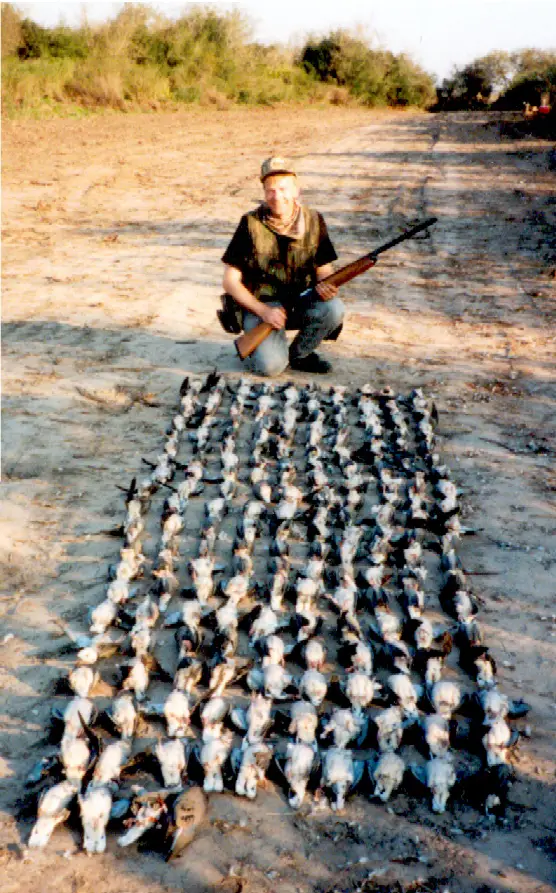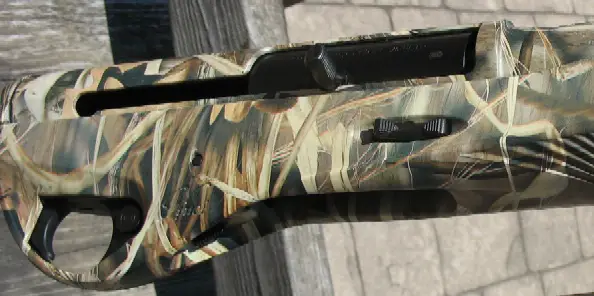


What is the Most Reliable Autoloading Shotgun?

Above, the sea of doves that Hayes and Hayes Outfitters has enjoyed presenting to their clients to the tune of 18 years and 100 million shells fired.
For a reasonable discussion of this often-asked, highly-pondered, loudly bragged-about question, let's take a step back from the usual gun club banter or advertising hyperbole. To start with, let's consider not just the stunt of a “torture test” that many manufacturers claim, all with predictably fabulous results. We will go straight to the source, a very good source of high-volume autoloading shotgun performance evaluation. Hayes and Hayes Outfitters is run by Alex and Zeke Hayes in Argentina. Please refer to http://www.handhoutfitters.com . They have been at it for over eighteen years. Hayes & Hayes keeps over 150 rental guns on hand for clients that would rather avoid the hassle of bringing their own shotguns, although you are most welcome to.
Hayes & Hayes clients consume up to six million shotshells a year. When the subject matter turns to millions of rounds per year for eighteen years, it is a body of experience that cannot be easily dismissed. No manufacturer or individual can hope to compile this level of data, not even close. Millions of rounds fired, with clients averaging over 1200 rounds per day is the type of work-out that few shotguns will ever see. It makes that little “4000 round” torture test on a new model shotgun look puny and insignificant by comparison. So what is it that Hayes & Hayes has observed with this level of shooting activity over the years? Zeke Hayes has come up with the following direct quotes in times past about a few popular models.
Beretta
391: “Doesn't hold up as well as the 390 because the 391 pistons
break."
Browning Gold: "It is the next in line after Beretta and Benelli
for quality."
Remington 1100/11-87: "Some fanatics bring Remingtons, but
they have to nurse them."
Most of the house guns are twenty gauges, the autoloaders of choice are Benelli Montefeltros and Beretta 390's. It isn't that even these guns are completely immune from any wear, as Hayes keeps replacement links on hand for their 390's and replacement inertia springs on hand for their Benelli's. Not everyone is going to agree with Zeke Hayes' finding that the most reliable autoloader is the Benelli followed by an obsolete Beretta 390, but that isn't the sole point.
The point is that very few individuals or companies in the world have equal experience to base their findings on than Zeke Hayes. A high-end, high-volume Argentina outfitter has more riding on the long-term performance of a shotgun than the fellow just shooting a couple of rounds of skeet per week. Jamming and broken guns give clients headaches, the outfitter as well, and keeping guns running is part of the cost of operating high-volume hunts.

Not produced since 1988, the steel-receivered Browning B-80 has long been a Wakeman favorite for high-volume hunts. Heavier than the latest models, with a narrower range of shell handling ability, it was supremely well-suited for a mix of doves, teal, and ducks in Argentina . . . all taken with 1-1/8 oz. lead loads.
Naturally, my own high-volume hunting experiences are not remotely comparable to Hayes & Hayes. I can tell you that on an Argentina hunt I brought a pair of Browning B-80 12 gauges, practicing the “Boy Scouts Motto.” As it turned out, the second B-80 wasn't necessary and was never fired. It wasn't dove alone on that hunt, but a heavy mix of teal and ducks as well. On another high-volume hunt, this time snow geese along with black duck and teal, the two guns I brought were a 390 and a B-80 as a back-up. On that hunt it was wind and rain every day and only the 390 was used, without a hitch. The B-80 was never fired. It was good to be prepared, nevertheless. I've long touted the durability of the steel-receivered B-80, as long as you keep a fresh mainspring in it, but it hasn't been produced for twenty-two years by now, hardly what most would consider a current production model. The Beretta 390 faded ten years ago, in favor of the 391 Urika, for better or worse. Mostly, worse.
That brings us to today, where a few of the latest models (Benelli Vinci, Beretta A400, Browning Maxus) have yet to be ported over to Argentina dove field favorite bore, the 20 gauge. The predecessors of the A400, the Xtrema and Xtrema2 have not yet had the South American success of other models, nor has the related gas-actioned Franchi 720 which is currently offered in 20 gauge, and 20 gauge alone.

Above, the all-time high-volume Argentina hunt favorite, the Benelli Montefeltro 20 gauge, this example in the upscale "Montefeltro Silver" model.
The Benelli Montefeltro is quite available and is one of the most affordable Benelli's made today, with a MSRP of $1269 for the Montefeltro 20 gauge walnut, while the same action is shared by the recently reviewed Benelli M2 ComforTech 20. The Beretta 390 has been been spottily re-released as the 3901 in some no-frills configurations, apparently assembled "somewhat" in the U.S. It seems that Beretta is trying to phase it out once again, as only the 12 gauge synthetic is currently listed, in only one barrel length. Certainly, all-out industrial strength reliability is not the only consideration in selection of an autoloader. Gun fit, control placement, balance, handling, ease of loading, shell handling, weight, recoil, trigger quality, warranty, and customer service all play a role. The exact weight of each role is something every savvy consumer necessarily defines in his or her own terms.
Nevertheless,
there are some clear generalizations that can be made about reliability
based on extreme high-volume experience as reported by Hayes and Hayes
and others. The Benelli Montefeltro / M2 line is the most durable autoloader
in times past, and is the gun that Zeke Hayes would buy tomorrow for himself.
The Beretta 390 is in the same league, with a bit more cleaning required
as you'd expect of any gas gun and perhaps the occasional broken or cracked
action rod to replace.
Browning Gold / Silver models are considered very good, but still a notch
back from the cited Benelli and Beretta models. The Golds are soft shooters,
but if they were less hassle under heavy use Hayes & Hayes would certainly
have them as house guns, but they do not. Remington 1100s and 11-87s are
comparatively fragile, dirty, and maintenance-intensive compared to all
of the above; to no one's great surprise.

The more open, improved and smooth loading gate of the Benelli Vinci along with its instant take-down, generous bolt release lever, and soft-shooting ComforTech stock while retaining the benefits of the Montefeltro action (and improving upon it) all combine to make it an easy pick for the high-volume dove fields. Unless it appears in 20 gauge, that is.
If I was packing up for an Argentina dove hunt today, I'd pick a Vinci 12 gauge assuming there were flats of 1 ounce #7-1/2 shotshells awaiting me on the other end. Both the ComforTech stock of the Vinci and its easy loading gate would lure me away from a Montefeltro. That is, unless a Vinci 20 gauge were available which would make it a toss-up. A walnut Maxus (which I've not fired as yet) or a Beretta A400 may well be superlative choices in 12 gauge as well, but both are a bit too new to be rationally compared with the proven durability, documented by millions upon millions of rounds already put through Benelli inertia and Beretta 390 action platforms. One hundred million shotshells already fired cannot be casually dismissed. But, as Chuck Berry sang in his 1964 hit, “You Never Can Tell.”
Copyright 2010 by Randy Wakeman. All Rights Reserved.




